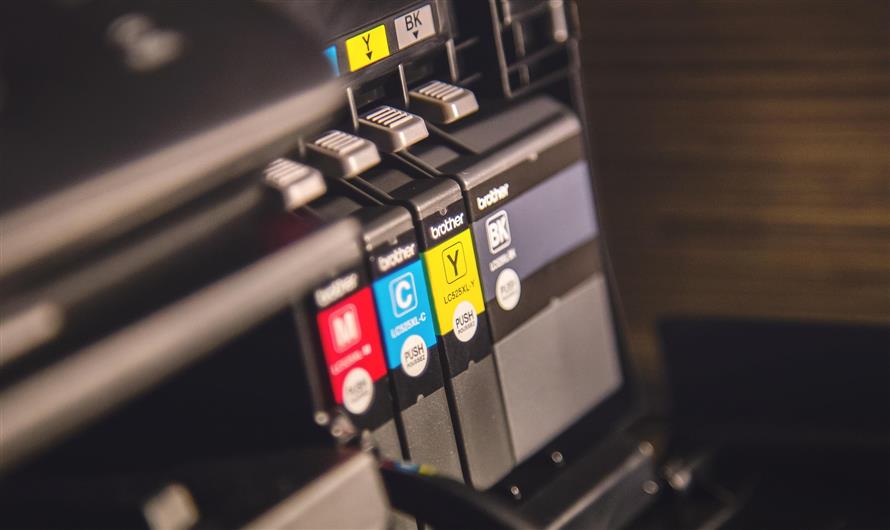If you like to keep spare toner cartridges on hand, storing them properly is more important than you might think. While toner is generally stable, it's still sensitive to certain conditions. Exposure to heat, light, or moisture can lead to clumping, leaking, or poor print quality issues that usually show up right when you need your printer to work flawlessly. A little care upfront can save you a lot of inconvenience later.
Whether you're stocking up for your home office or managing supplies for a business, this guide will help you store toner cartridges the right way so they stay in top condition until you need them.
Why Proper Storage Matters
Toner cartridges contain a fine, powdered ink that’s sensitive to environmental conditions. While they generally have a long shelf life (usually 18–24 months unopened), storing them incorrectly can shorten that considerably.
If toner becomes damaged or degraded, it can lead to printing issues like streaking, uneven coverage, or poor-quality prints. In worse cases, it could even damage your printer’s internal components.
Simply tossing your cartridges in a drawer or cabinet and forgetting about them may seem harmless, but it's not the best approach, especially if you rely on consistent, professional-looking print results.
1. Keep Them in Their Original Packaging
The original packaging is designed specifically to protect toner cartridges from light, air, and moisture. Even if you’re tempted to unpack them early for convenience, it's better to leave them sealed until you're ready to install.
Each toner cartridge box usually includes anti-static bags and cushioning that help preserve the toner inside and protect the cartridge's sensitive components. Unboxing too early exposes the cartridge to unnecessary environmental stress.
So unless you're seconds away from installing it, your best bet is to keep that box sealed.
2. Store in a Cool, Dry Place
Temperature and humidity are two of the biggest factors that affect how well toner cartridges hold up over time. Extreme heat can cause the toner powder to clump, while high humidity can lead to moisture damage.
Avoid storing cartridges in areas like garages, lofts, or near windows where temperatures fluctuate or where sunlight can reach them.
Instead, opt for a climate controlled space like a storage closet, office cabinet, or even a drawer, just as long as it’s cool and dry.
3. Keep Cartridges Away from Direct Sunlight
Even if you're storing your toner cartridges indoors, exposure to direct sunlight can damage both the cartridge body and the toner powder inside. Light can cause warping, fading, or deterioration of plastic parts and labels, and may alter how well the toner flows.
That’s why it’s best to store toner cartridges in opaque boxes or inside drawers, especially if your storage space has windows that stay open for long periods.
4. Store Cartridges Horizontally, Not Vertically
It might be tempting to stand cartridges upright to save space, but most manufacturers recommend storing them horizontally. This helps the toner powder remain evenly distributed across the internal compartments and avoids clumping at one end.
Laying your toner cartridges flat also helps prevent damage to the drum or other internal parts. If you stack them, be sure not to pile too many on top of one another to avoid unnecessary pressure or warping.
5. Avoid Dusty or Dirty Storage Areas
Dust may seem harmless, but over time, it can build up on the toner cartridge and potentially work its way into the printer. This can cause print quality issues or even mechanical faults. A dusty toner cartridge can also interfere with the chip readers or connections when you eventually go to install it.
Always keep toner cartridges in a clean environment. If you’re storing them for long periods, it’s a good idea to give them a gentle wipe with a dry cloth before installing them, just to be safe.
6. Check Expiration Dates
Yes, toner cartridges have a shelf life. While they don’t “expire” in the same way perishable food does, using an old toner cartridge can lead to poor print quality or reliability issues.
When stocking up, use the "first in, first out" method. Label boxes with the purchase or expiration date and make sure you use the oldest toner cartridges first to minimise waste.
7. Don't Shake or Disturb Unused Cartridges
It might seem like a good idea to give a toner cartridge a quick shake, especially if you’ve seen people do that with low-ink cartridges. However, if you’re storing a new, unused cartridge, shaking it around can actually cause the toner to settle unevenly or create static issues.
Keep your toner cartridges stable and undisturbed during storage. The less handling, the better, until you're ready to install it.
Final Thoughts
Storing toner cartridges properly isn’t complicated, but it does take a little planning. By keeping them sealed, cool, dry, and clean, you’ll ensure that when it’s time to print, your toner performs just like it should.
Whether you’re managing a few backups at home or a whole stockroom for a business, proper storage saves money, reduces waste, and keeps your printing process smooth and predictable.




Leave Comment